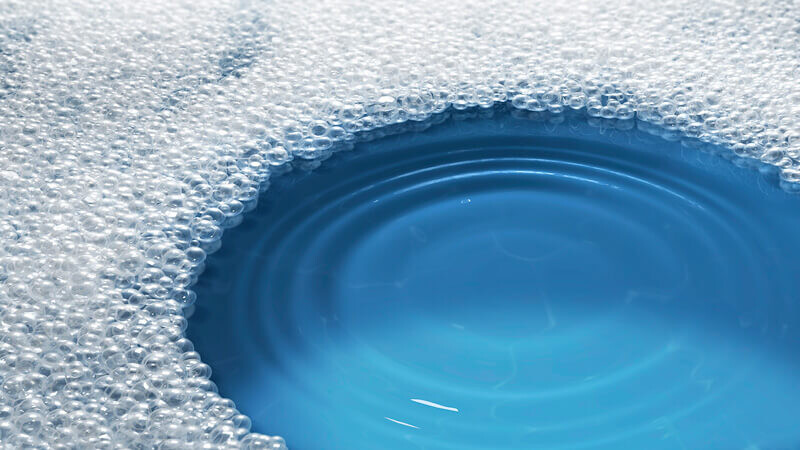Defoamers: Key Solutions for Managing Foam in Various Processes
Defoamers: Key Solutions for Managing Foam in Various Processes
Blog Article
The Duty of Defoamers in Enhancing Product High Quality and Performance
In different making processes, the presence of foam can considerably impede item quality and operational efficiency. Defoamers function as necessary ingredients that alleviate this problem, making certain smoother manufacturing operations while enhancing the visual and useful features of the end products (defoamers). Their application spans a wide range of industries, from food and beverage to pharmaceuticals, where consistency and reliability are paramount. The selection of the proper defoamer can be important to accomplishing optimal outcomes, elevating crucial questions concerning formula compatibility and performance metrics that warrant additional expedition.
Recognizing Defoamers
Recognizing the duty of defoamers is necessary for maintaining item top quality throughout different markets. Defoamers are chemical additives made to protect against the formation and minimize of foam in liquid systems, which can adversely impact procedures such as mixing, loading, and surface tension. Lathering can lead to inefficiencies, item issues, and compromised visual allure, making defoamers a critical part in making procedures.
In commercial applications, defoamers assist to enhance product consistency and stability. The effective usage of defoamers not just ensures smoother manufacturing processes however additionally adds to remarkable product efficiency.
Moreover, the option and formulation of a defoamer need to align with specific application needs, such as compatibility with other active ingredients, effectiveness under varying temperature level and pH conditions, and possible governing restraints. Inevitably, recognizing defoamers' functions and their significance in various solutions is vital for optimizing manufacturing and making certain the finest final result.
Kinds Of Defoamers
Defoamers can be classified into numerous types based upon their structure and device of action. The key kinds include silicone-based, non-silicone natural, and not natural defoamers.
Silicone-based defoamers are among the most effective, largely due to their capability to spread out swiftly on the liquid surface and interrupt foam development. Their special chemical structure enables for premium stability, making them appropriate for high-temperature applications and settings with varying pH levels.
Non-silicone natural defoamers, commonly made up of natural oils or fatty acids, are valued for their biodegradability and lower toxicity. These are commonly used in food and beverage applications where security and environmental impact are critical.
Inorganic defoamers, which consist of compounds like talc or calcium carbonate, act by boosting the thickness of the fluid, therefore minimizing foam security. They are usually made use of in commercial processes where compatibility with other materials is not a worry.
Each sort of defoamer has distinct advantages and limitations, permitting customized solutions depending on the specific frothing concerns encountered in various applications. Understanding these differences is crucial for enhancing performance and achieving desired item high quality.
Applications Across Industries
Various industries leverage defoamers to boost item top quality and operational efficiency. In the food and drink sector, defoamers are essential in processes such as brewing and dairy production to avoid foam development, which can cause inefficiencies and item inconsistency. By managing foam, manufacturers can make certain far better yield and an extra uniform item.
In the pharmaceutical industry, defoamers play an essential role in the formula of liquid medicines, where too much foam can hamper mixing and precise application. Their usage aids keep the stability of the solutions and assists in smoother production processes.
The paint and coatings market additionally depends on defoamers to boost the performance of items during application. By decreasing foam, these additives make sure a smoother coating and enhance the visual qualities of the final product.

Benefits of Using Defoamers
While the application of defoamers differs across sectors, their benefits regularly boost product top quality and procedure efficiency. One substantial advantage is the decrease of foam formation during producing procedures, which can otherwise bring about production delays and incongruities in product top quality. By lessening foam, defoamers make it possible for a smoother circulation of materials, promoting more effective procedures and lowering the likelihood of devices breakdowns.
Furthermore, using defoamers can boost the appearance and structure of end products. In industries such as layers, paints, and food processing, extreme foam can compromise the aesthetic aesthetics and general high quality, while the suitable defoamer application guarantees a consistent coating and desirable qualities. Additionally, defoamers can add to set you back financial savings by decreasing waste during manufacturing and maximizing using basic materials (defoamers).

Picking the Right Defoamer
Choosing the appropriate defoamer is essential for optimizing production processes and making certain item quality. The choice of defoamer influences not just the performance of foam control but also the overall performance characteristics of the final product. Aspects to think about consist of over here the type of application, the chemistry of the solution, and the ecological problems under which the product will be utilized.
Different industries may require particular defoamer kinds, such as silicone-based, natural, or polymeric defoamers. Comprehending the compatibility of the defoamer with the main components is vital to avoid unfavorable reactions that can endanger product honesty. In addition, the defoamer's efficiency in different temperatures and pH levels should be assessed to make certain consistent efficiency.
Checking the defoamer in small applications can give valuable understandings right into its why not try this out performance and suitability. Factor to consider of regulatory conformity, especially in food, pharmaceuticals, and cosmetics, is extremely important in selecting a defoamer. Inevitably, a detailed assessment of these aspects will certainly result in the choice of a defoamer that not just manages foam effectively but likewise enhances the high quality and efficiency of the end product.
Final Thought

In conclusion, defoamers are crucial additives that considerably boost item high quality and efficiency across different industries. The calculated selection and application of defoamers lead to cost savings, optimized source use, and enhanced customer complete satisfaction.
Lathering can lead to inefficiencies, item flaws, and jeopardized aesthetic charm, making defoamers an essential component in producing procedures.

Report this page